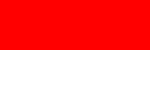Hierarchy of Influence on Talkshow Kick Andy Double Check Metro TV Program Guiteeres Heroesv
Hirarki Pengaruh Pada Talkshow Kick Andy Double Check Metro TV Program Guiteeres Pahlawan
Abstract
The purpose of this study was to determine the mechanism of the policy that is applied from the leadership of the editor to the news aired very meet the elements presented starting from the smallest circle at the level of the individual perpetrators of the media, the practice of routine, media organizations, extra media, up to the level of ideology on the talk show “Kick ANDY DOUBLE CHECK” METRO TV. This research uses a qualitative research method with a descriptive analysis approach and purposive sampling technique, with unstructured interviews (unstructured interview) free interviews. The results showed that the influence of the ownership of the media content media is very influential. The same is true with the case study program Kick Andy Metro TV. It is clear how the levels of the factors described how the hierarchy of the influence of the hierarchy in making the policy editor on the television station Metro TV. From the orientation of the personal media workers, the professionalism, the company's policy, the company's ownership pattern, the economic environment, the advertisers to influence - the influence of ideology. So, the five factors described earlier are very influential on the content of media that is delivered.
Downloads
References
Aufriandra, F., Adelya, B., & Ulfah, S. (2017). Komunikasi Mempengaruhi Tingkah Laku Individu. JPGI (Jurnal Penelitian Guru Indonesia), 2(2), 9-15. https://doi.org/10.29210/02219jpgi0005
Cresswell, J. (2016). Research Design Pendekatan Metode Kualitatif, Kuantitatif, dan Campuran. Yogyakarta: Pustaka Pelajar.
Drianus, O. (2018). Manusia di Era Kebudayaan Digital. MAWA’IZH: JURNAL DAKWAH DAN PENGEMBANGAN SOSIAL KEMANUSIAAN, 9(2), 178–199. https://doi.org/10.32923/maw.v9i2.784
Gani, R. (2005). Media Massa dalam Masyarakat Madani. Mediator: Jurnal Komunikasi, 6(1), 35–42. https://doi.org/10.29313/mediator.v6i1.1174
Hajad, V. (2018). Media dan Politik (Mencari Independensi Media Dalam Pemberitaan Politik). SOURCE : Jurnal Ilmu Komunikasi, 2(2). https://doi.org/10.35308/source.v2i2.295
Khoirun Nida, F. (2015). PERSUASI DALAM MEDIA KOMUNIKASI MASSA. AT-TABSYIR: Jurnal Komunikasi Penyiaran Islam, 2(2). http://dx.doi.org/10.21043/at-tabsyir.v2i2.502
Krisdinanto, N. (2014). Anomali dan Teori Hirarki Pengaruh terhadap Isi Media. KOMUNIKATIF, 3(1), 1-18. https://doi.org/10.33508/jk.v3i1.1243
Laksono, P. (2020). Komunikasi Massa dan Demokrasi dalam Arus Sistem Politik. MEDIAKITA, 4(1). https://doi.org/10.30762/mediakita.v4i1.2448
Lesmana, T. (2013). Kebebasan Pers Dilihat dari Perspektif Konflik, antara Kebebasan dan Tertib Sosial. Jurnal ILMU KOMUNIKASI, 2(1). https://doi.org/10.24002/jik.v2i1.249
Nugroho, H. (2015). Demokrasi dan Demokratisasi: Sebuah Kerangka Konseptual Untuk Memahami Dinamika Sosial-Politik di Indonesia. Jurnal Pemikiran Sosiologi, 1(1), 1. https://doi.org/10.22146/jps.v1i1.23419
Poti, J. (2018). Demokratisasi Media Massa, Relasi Kuasa Negara Masyarakat dan Pemilik Media (Kajian Terhadap Peran Komisi Penyiaran Indonesia). KEMUDI : Jurnal Ilmu Pemerintahan, 1(1), 78-120. Retrieved from https://ojs.umrah.ac.id/index.php/kemudi/article/view/734
Reese, S. D., & Shoemaker, P. J. (2016). A Media Sociology for the Networked Public Sphere: The Hierarchy of Influences Model. Mass Communication and Society, 19(4), 389–410. https://doi.org/10.1080/15205436.2016.1174268
Sugiyono. (2017). Metode Penelitian Pendidikan Pendekatan Kuantitatif, Kualitatif, Dan R&D. Bandung: Alfabeta.
Copyright (c) 2022 Arif Rasyidi, Hendra Eka Syahputra, Sri Suparni

This work is licensed under a Creative Commons Attribution-NonCommercial-ShareAlike 4.0 International License.
- Authors retain copyright and grant the journal right of first publication with the work simultaneously licensed under a Creative Commons Atribusi-Non Commercial-Share Alike (CC BY-NC-SA).
- Authors are able to enter into separate, additional contractual arrangements for the non-exclusive distribution of the journal's published version of the work (e.g., post it to an institutional repository or publish it in a book), with an acknowledgement of its initial publication in this journal.
- Every publication (printed/electronic) are open access for educational purposes, research, and library. Other than the aims mentioned above, the editorial board is not responsible for copyright violation.

















